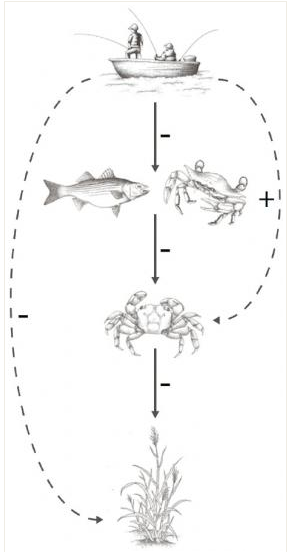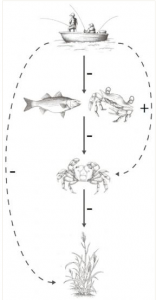salt marsh problems

some research on the problems facing existing salt marshes today:
This conclusion, which surprised the scientists, emerged from a long-term, large-scale study of salt marsh landscapes in an undeveloped coastline section of the Plum Island Estuary in Massachusetts. Over nine years, the scientists added nitrogen and phosphorus to the tidal water flushing through the marsh’s creeks at levels typical of nutrient enrichment in densely developed areas, such as Cape Cod, Mass., and Long Island, N.Y. (Usually, nutrients originating from septic systems, sewerage, and soil fertilizers on land flow with rainwater down to the coastal ocean.)
A few years after the experiment began, wide cracks began forming in the grassy banks of the tidal creeks, which eventually slumped down and collapsed into the muddy creek. “The long-term effect is conversion of a vegetated marsh into a mudflat, which is a much less productive ecosystem and does not provide the same benefits to humans or habitat for fish and wildlife,” Deegan says.
Until this study, it seemed that salt marshes had unlimited capacity for nutrient removal, with no harmful effects on the marshes themselves. “Now we really understand that there are limits to what salt marshes can do,” Deegan says. “And in many places along the Eastern seaboard—such as Jamaica Bay in New York, where marshes have been falling apart for years—we have exceeded those limits.”
The Marine Biological Laboratory
+
 “Recreational fishing is a major contributor to the rapid decline of important salt marshes along Cape Cod because it strips top predators such as striped bass, blue crabs, and smooth dogfish out of the ecosystem, according to new research by Brown University ecologists.
“Recreational fishing is a major contributor to the rapid decline of important salt marshes along Cape Cod because it strips top predators such as striped bass, blue crabs, and smooth dogfish out of the ecosystem, according to new research by Brown University ecologists.
With far fewer predators in areas where recreational fishing is prevalent, native Sesarma crabs have had relatively free rein to eat salt marsh grasses, causing the ecosystem to collapse, said Mark Bertness, chair of Brown’s Department of Ecology and Evolutionary Biology and the paper’s senior author.”at Brown University: